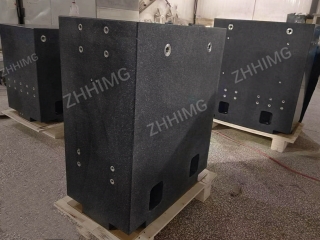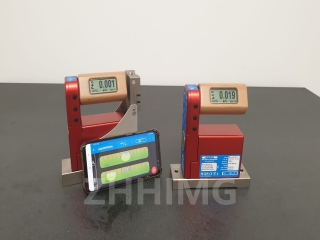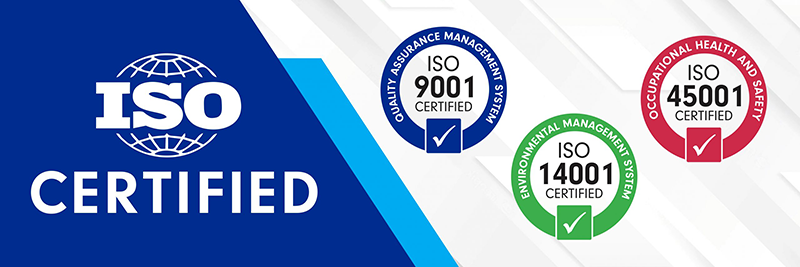Mainly through the following key links:
• High-quality material selection: To manufacture high-precision granite precision base, we must first choose granite materials with uniform texture and dense structure. The mineral particles of this kind of granite are fine and evenly distributed, with high hardness and strength, which can provide good basic conditions for obtaining high precision flatness. For example, Jinan Green, Taishan green and other high-quality granite varieties, because of their stable physical properties and good processing properties, are often used to manufacture precision bases.

• Roughing molding: The use of large cutting equipment to cut granite raw materials into blanks close to the finished size of the base, leaving a margin for subsequent fine processing. At this stage, cutting tools such as diamond saw blades are used to control the cutting speed, feed rate and cutting path through accurate CNC programming to ensure the flatness and verticality of the cutting surface, and the flatness error is controlled within a certain range to provide more regular billets for subsequent processing.
• Fine grinding: The granite base after rough processing needs to be finely ground, which is a key process to achieve high precision flatness. Grinding machines are usually used, equipped with grinding wheels or grinding disks of different sizes, and grinding is carried out step by step from coarse-grained to fine-grained. First, the coarse abrasive material is used to quickly remove most of the processing allowance and initially improve the flatness; Then change to a finer grinding material for fine grinding, further reduce the surface roughness, improve the flatness accuracy. During the grinding process, the flatness of the surface of the granite base is continuously improved by precisely controlling the grinding pressure, grinding speed and grinding time, as well as using advanced grinding processes, such as planetary grinding and double-sided grinding.

• High-precision measurement and feedback: In the processing process, it is necessary to use high-precision measuring instruments to measure and monitor the flatness of the granite base in real time. Commonly used measuring instruments are laser interferometer, electronic level, coordinate measuring instrument and so on. The laser interferometer uses the principle of light interference to accurately measure the flatness of a plane by emitting a laser beam, with an accuracy of up to nanometers. The measuring instrument feeds the measurement data back to the control system of the machining equipment, and the control system automatically adjusts the machining parameters according to the feedback data, such as grinding position, pressure, etc., and corrects the flatness error to achieve closed-loop control and ensure that the flatness is constantly approaching the design requirements.
• Surface treatment and polishing: After grinding, the surface of the granite base needs to be polished to further improve the surface quality and flatness. The polishing process uses the polishing wheel and polishing fluid to remove the microscopic defects on the surface through chemical and mechanical action, making the surface more smooth and flat, and achieving the final high-precision flatness requirements. At the same time, some advanced polishing technologies, such as ion beam polishing, magnetorheological polishing, etc., are also applied to the processing of granite precision base, which can achieve higher precision surface polishing and meet the needs of ultra-precision machining.
Post time: Apr-10-2025

